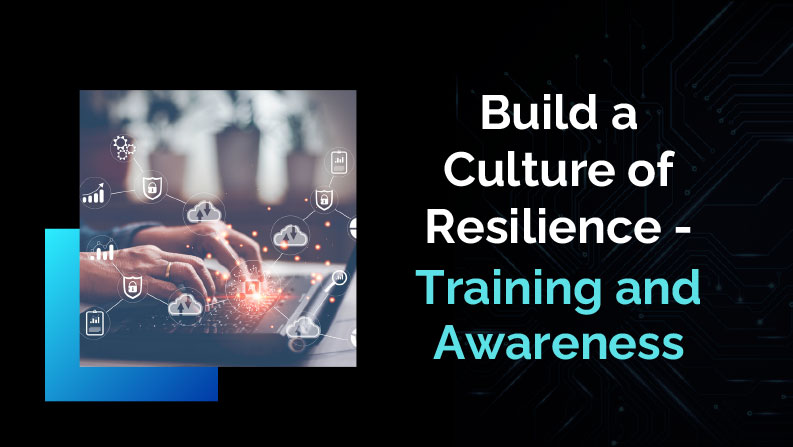Why Culture Is the Foundation of Resilience
Resilience isn’t just about tools, technologies, policies, and procedure—it most significantly concerns people, who manage all of these other elements. They are your first line of defense. Building a strong cybersecurity culture is a vital component of your resilience strategy. Employees who are empowered through training become your first line of defense.
Empower your team to be active participants in your security strategy. A phishing email, might slip past technology, but a well-trained employee is able to detect it, and stop it in its tracks, before an attack starts.
Key Steps to Foster a Robust Culture of Resilience
- Begin with Regular Training: cybersecurity training is never a one-and-done exercise. Threats evolve, and so must your employees’ knowledge and vigilance. Offer scheduled training sessions to your team on:
a. Recognizing phishing attempts
b. Spotting social engineering tactics
c. Understanding data protection practices - Simulate Real-World Scenarios: practice makes better, and better, and better! Conduct ongoing phishing simulations, with tabletop exercises, which will test and improve your team’s ability to respond to potential incidents.
- Promote Open Communication: a culture of resilience thrives on transparency. Encourage employees to report suspicious activities without fear, or blame.
- Integrate Resilience into Everyday Work: Security awareness must be a part of daily operations, not an afterthought. Incorporate resilience into onboarding, regular updates, and team meetings.
Integrating Resilience Throughout the Organization
Building a culture of resilience requires consistent effort and commitment. The resulting rewards are worth it. Your team becomes a driving force for supporting and enhancing a culture of resilience, helping to strengthen the organization’s defenses, at every level.
The question is: Are you empowering your team to protect your organization? If not, it’s time to act. A complimentary risk assessment will help identify gaps in training and awareness, giving you a step-by-step roadmap to build a culture of resiliency.





